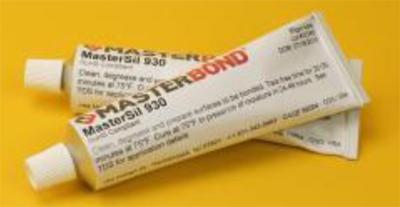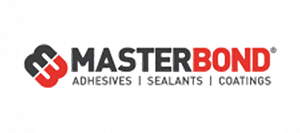
With enhanced chemical resistance, Master Bond MasterSil 930 is an acetoxy-type fluorosilicone for bonding, sealing and coating applications in aerospace, electronics, specialty OEM and other industries. This one part system is able to withstand exposure to water, fuels, oils, greases, refrigerants, acids, bases and solvents better than standard silicones.
MasterSil 930 has a paste viscosity, and as a one part system, it is easy to handle. It cures relatively quickly with a tack free time of 20-30 minutes, depending upon the thickness. Thinner sections cure more rapidly than thicker ones. Typical of one part silicones, the curing mechanism is based on the humidity level; the higher it is, the faster the cure. With a tensile strength of 800-1,100 psi, this compound bonds well to a wide variety of substrates including metals, composites, ceramics, glass, rubbers, plastics and other silicones.
Featuring a hardness of 30-40 Shore A, MasterSil 930 is a flexible system and resists rigorous thermal cycling as well as mechanical and thermal shock. It is electrically insulative and has a volume resistivity of over 1014 ohm-cm. Its service temperature range is -85°F to +450°F. MasterSil 930 is white in color and available for use in 80 gram tubes.
Contact Details
Related Glossary Terms
- ceramics
ceramics
Cutting tool materials based on aluminum oxide and silicon nitride. Ceramic tools can withstand higher cutting speeds than cemented carbide tools when machining hardened steels, cast irons and high-temperature alloys.
- composites
composites
Materials composed of different elements, with one element normally embedded in another, held together by a compatible binder.
- hardness
hardness
Hardness is a measure of the resistance of a material to surface indentation or abrasion. There is no absolute scale for hardness. In order to express hardness quantitatively, each type of test has its own scale, which defines hardness. Indentation hardness obtained through static methods is measured by Brinell, Rockwell, Vickers and Knoop tests. Hardness without indentation is measured by a dynamic method, known as the Scleroscope test.
- tensile strength
tensile strength
In tensile testing, the ratio of maximum load to original cross-sectional area. Also called ultimate strength. Compare with yield strength.

